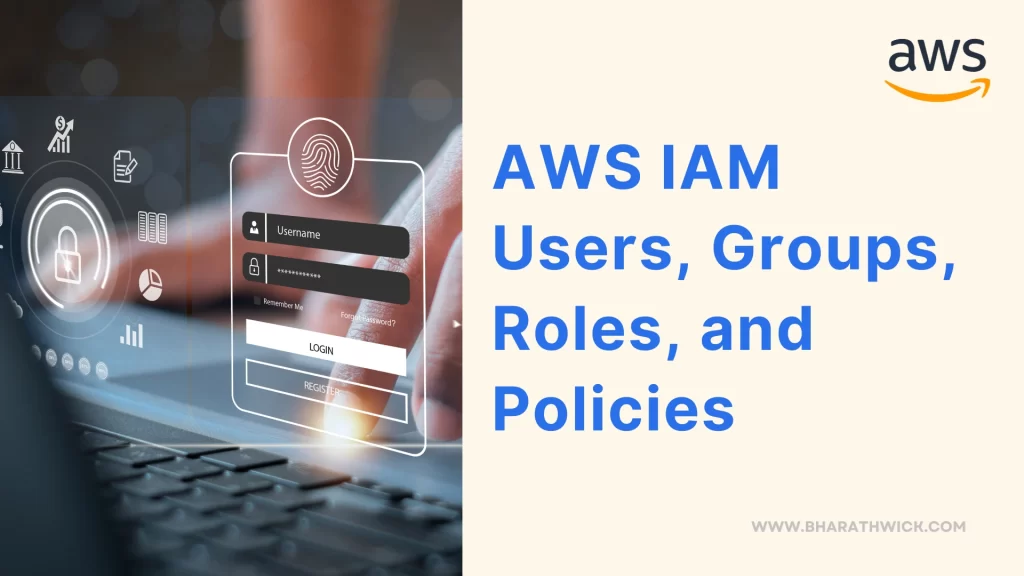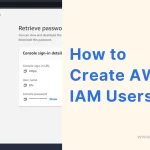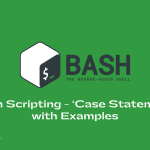If you’re using Amazon Web Services (AWS), you’re in luck! They have a top-notch Identity and Access Management (IAM) service that makes it easy for you to control access to your AWS resources in a secure way.
With IAM, you can customize permissions for users, groups, and roles within your AWS environment. In this blog post, we’ll dive into the AWS IAM, including the four core components: Users, Groups, Roles, and Policies.
By the end, you’ll have a better understanding of how these components work together to keep your AWS infrastructure organized and secure.
AWS Identity and Access Management (IAM)
As you know, security is important when it comes to AWS resources. That’s where AWS IAM comes in. It’s a powerful service that lets you manage user identities, permissions, and access to your AWS resources, all while keeping them safe and secure.
Now, let’s dive into the important components of AWS IAM so that you can get the most out of this crucial tool.
IAM Users
In AWS, IAM users are like superheroes with unique usernames and security credentials (password or access keys). They have the power to access specific AWS resources, but with great power comes great responsibility! That’s why creating separate IAM users for different people or applications is key to granting them only the necessary permissions.
By doing so, you’re not only enhancing security but also gaining better control over access to your AWS resources.
Key points about IAM users:
- Organizations often create individual users for their employees, contractors, or applications. This helps ensure that everyone who needs access to the organization’s resources has their own unique account.
- Users have the power to control their actions on AWS resources with the help of policies that grant them permissions.
- As a user, you have the special ability to create your own access keys for programmatic access. This unique feature ensures that you can easily and securely access the necessary information you need without any hassle.
Example: Let’s say you want to create a user named “Bharath” with the username “bharath”. You can then assign permissions to this user, such as the ability to launch EC2 instances or manage S3 buckets. With this setup, Bharath will have exactly the access they need to get their work done.
IAM Groups
Did you know that IAM groups are an easy and efficient way to manage user permissions in AWS? By grouping users based on their job functions or access needs, you can assign policies and permissions collectively. This means you don’t have to assign permissions to each user individually.
Key points about IAM groups:
- Managing a large number of users can be quite a task. Fortunately, groups can help you manage sets of users collectively. This makes it easier to stay organized and ensure that everyone is included in the appropriate communications and activities.
- Groups are like little kingdoms, and policies are the rules that govern them. When you become a member of a group, you automatically inherit those rules. It’s like being part of a secret club with special privileges!
- Working with groups can simplify the process of expanding your IAM policies and permissions.
Example: How about setting up an IAM group called “Developers” and giving them access to EC2 instances? Any member added to the “Developers” group will automatically be granted these permissions. It’s a great way to streamline things and make sure everyone has the access they need.
IAM Roles
Roles are a fantastic way to give permissions to AWS services, applications, or even other AWS accounts. Roles don’t come with permanent security credentials, but they do provide temporary permissions through assumed roles. This is a really secure way to grant access to resources without having to share long-term access keys. It’s a win-win situation!
Key points about IAM roles:
- Entities can be granted temporary permissions through the use of roles.
- AWS services, EC2 instances, Lambda functions, and more can all take on these assumptions.
- Did you know that roles can be used to securely grant external AWS accounts access to your resources? This is a great way to streamline cross-account access and keep your data safe.
Example: You can grant an EC2 instance access to other AWS resources like S3 without the need to store permanent credentials. It’s easy! Just create an IAM role named “EC2FullAccess” and attach it to the instance. With this role, your EC2 instance can access all the resources it needs without any hassle.
IAM Policies
AWS IAM policies are the backbone of user permissions management in AWS. These documents define what actions are allowed or denied on what resources and under what conditions.
Users, groups, or roles can have policies attached to them, which makes it easy to control access to your resources. AWS offers pre-built policies that cover common scenarios, and you can always customize your own policy to meet your needs.
Key points about IAM policies:
- JSON is the language that gives permissions to policies. It’s the key to unlocking the power of your system!
- Users, groups, and roles can all benefit from being equipped with these versatile attachments.
- You have the ability to control who has access to what, and policies can provide even more flexibility in achieving that.
Example: Let’s create an IAM policy that will let users read data from an S3 bucket but will also prevent them from making any changes to it.
Once we have this policy in place, we can assign it to a specific group or user to make sure that these permissions are enforced. It’s an easy and effective way to keep your data safe and secure!
JSON policy for read-only S3 access:
{
"Version": "2012-10-17",
"Statement": [
{
"Effect": "Allow",
"Action": "s3:GetObject",
"Resource": "arn:aws:s3:::example-bucket/*"
}
]
}Final Thoughts
If you want to keep your AWS environment secure and make sure that only the right people have access to your resources, then you need to get familiar with AWS IAM.
This is the key to controlling access and ensuring that only those who need it have permission to take actions. By understanding IAM users, groups, roles, and policies, you’ll be able to set up a secure system that protects your infrastructure from unauthorized access.
With the right knowledge, you can grant access to the right people and services while still maintaining a strong security posture.







